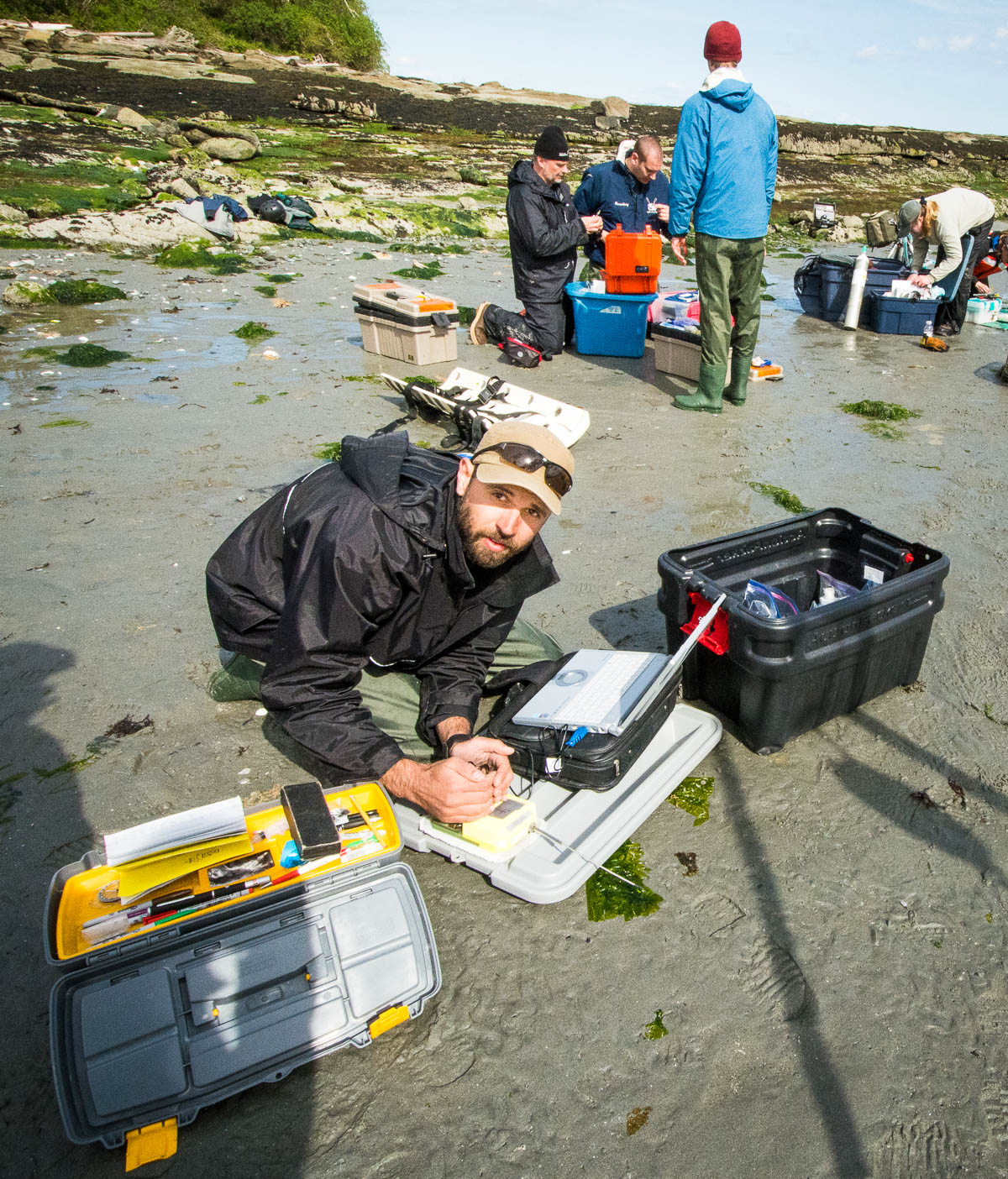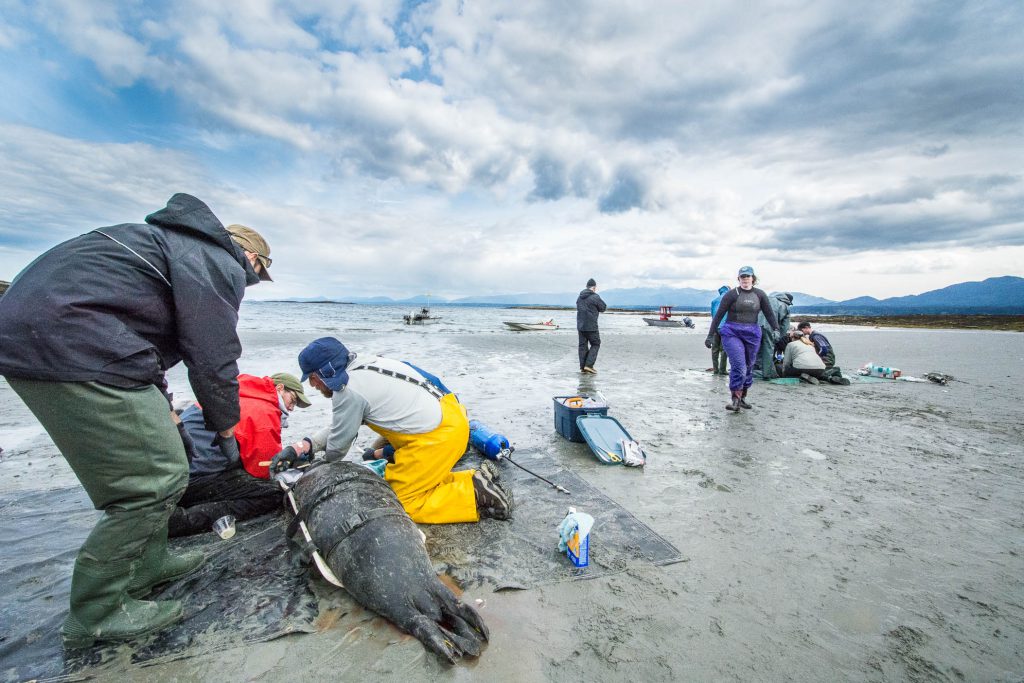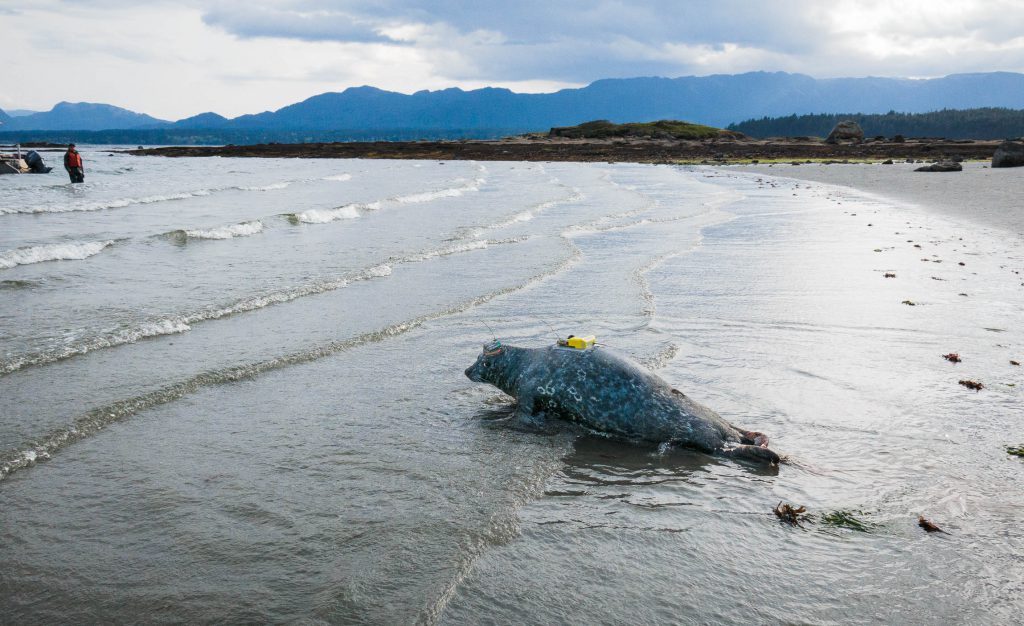
Hassen Allegue uses his laptop computer to program one of the biologging tags before deploying it on a harbor seal.
Biologging tags reveal specialist-feeding behaviors by seals that have implications for conservation of salmon
Large numbers of juvenile salmon (smolts)–whether from a river or hatchery raised—leave their natal streams each spring to enter the ocean. Harbor seals often gather in river mouths at this time, presumably to take advantage of this predictable food source. However, it is not clear whether predation on this early life-stage of is a significant source of mortality for coho and Chinook salmon populations.
Hassen Allegue, a UBC MSc student, investigated where, when and how this predation occurs in relation to the release of smolts from a Vancouver Island hatchery. He wanted to know the extent to which this predation might be opportunistic, or whether it represents a specialist feeding behavior. Is it a common strategy or something practiced by only a few highly visible individuals? Does seal predation differ with different types of salmon smolts?
To answer these questions, Hassen equipped 17 harbor seals with GPS loggers and Daily Diary tags to track the seals before and after the release of thousands of coho and Chinook smolts from the Big Qualicum hatchery. The data recorded by the tags carried by the seals allowed Hassen to reconstruct the high-resolution movements of the seals, and quantify the number of times they encountered prey.

Allegue and his team prepare to glue the tracking tags to the fur of a harbor seal. The tags will fall off when the animals molt. The tag that records the fine-scale behaviors of the seals floats, and is recovered after molting to download the data.
Hassen found that the harbor seals present during spring in the Big Qualicum Estuary could be grouped into 4 types of foragers. While about half of the seals fed in the estuary where smolts were present, only a small portion (18%) of these seals were actually salmon smolt specialists. While these “smolt-specialist” seals appeared to target the coho smolts in the river mouth, they apparently ignored the Chinook smolts, which left the river just a few days later. However, there was a second group of seals (18%) that seemed to target larger species of fish preying on the out-migrating Chinook smolts. The two other seal groups did not feed at the river mouth in association with the concentrated numbers of smolts, but either fed near their main haul-out sites away from the river (52%), or were transient and left the estuary area all together (12%).

A well dressed harbor seal returns to sea carrying the data loggers that will record every second of the seal’s life for the next month.
Hassen’s results suggest there is a high degree of individual foraging and diet specializations among harbor seals. They also show that a small number of seals specialize in consuming coho smolts, but do not appear to respond to the large pulse of the smaller bodied Chinook smolts at the river mouth.
Such information concerning the fine-scale foraging behavior of harbor seals in relation to pulses of out-migrating smolts can be used to design mitigation strategies to enhance coho and Chinook populations.
Further details about Hassen’s study can be found in:
|
|||||||||||||
Hassen Allegue is a MSc Student at UBC’s Marine Mammal Research Unit.
